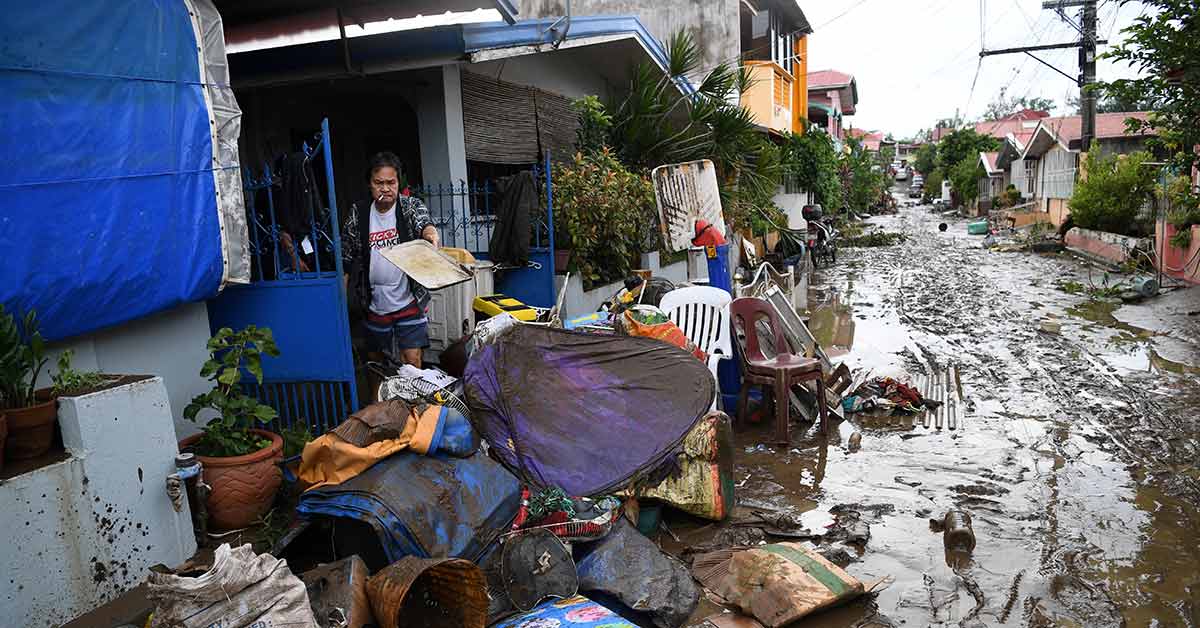At least 10 people were killed as Typhoon Goni pounded the Philippines Sunday, ripping off roofs, toppling power lines and causing flooding in the hardest-hit areas where hundreds of thousands had fled their homes.
The strongest typhoon of the year also triggered deadly landslides that buried a number of houses in the southern part of the most populous island of Luzon, officials said.
Goni was a "super typhoon" when it made landfall on Catanduanes Island before dawn, packing maximum sustained wind speeds of 225 kilometres (140 miles) per hour and dumping heavy rain across the region.
It was downgraded a few hours later as it swept across Luzon and reduced intensity as it skirted the capital Manila and headed out to the South China Sea where it is expected to weaken into a severe tropical storm.
Catanduanes and Albay provinces bore the brunt of Goni's ferocious winds, which the state weather forecaster had warned earlier could cause "catastrophic" damage.
It came a week after Typhoon Molave hit the same region of the natural disaster-prone archipelago, killing 22 people.
At least nine people were killed in Albay and one in Catanduanes, Civil Defense said in a statement.
That included three people who died in rain-induced landslides of volcanic ash that police said engulfed numerous houses in two adjacent villages near the active Mayon volcano in Albay.
"We have recovered three bodies and are looking for three more," said Major Domingo Tapel, chief of police in Guinobatan town.
The roofs of buildings including two evacuation centres were torn off by the force of the wind, while torrential rain flooded roads and inundated towns.
"The winds are fierce. We can hear the trees being pummelled. It's very strong," Francia Mae Borras, 21, said from her home in the nearby coastal city of Legazpi.
Nearly 400,000 people fled their homes, most of them to evacuation centres, Civil Defense said.
Various officials in affected areas reported power cuts, which were disrupting telecommunication services and hampering efforts to assess the extent of the damage.
"Our roads have a lot of debris from the mountains such as branches and sand, some which came from Mayon (volcano). Some roads are unpassable," said Carlos Irwin Baldo, the mayor of Camalig, near Legazpi.
In Manila, the airport was closed and residents were evacuated from low-lying slum areas at risk of being inundated by storm surges.
"It's better to be safe," Arman Atuel, 33, said as he sat with his wife in a vehicle taking people to shelters.
The couple do not own a television or radio so were not aware of the typhoon's strength.
Thousands of soldiers and police were on standby to help with evacuations and rescue efforts.
Photos shared by the Philippine Red Cross on Twitter showed personnel wading through flooded streets in a village in Batangas province, south of Manila, to rescue people trapped in their homes.
Coronavirus Complications
Schools, which have been empty since the start of the coronavirus pandemic, are being used as emergency shelters, as are government-run evacuation centres and gymnasiums.
COVID-19 patients being treated in tent facilities have been evacuated, officials said.
The Philippines has recorded more than 380,000 infections, including more than 7,200 deaths, which has stretched its resources and complicated evacuations.
Mary Ann Echague, 23, and her family fled their home in Legazpi on Saturday to an inland primary school where they were sheltering in a classroom with several other families.
"We fear the wrath of the typhoon," said Echague, who was with her two children, parents and siblings. They had carried with them a portable stove, tinned meat, instant noodles, coffee, bread, blankets and pillows.
The Philippines is hit by an average of 20 storms and typhoons every year, which typically wipe out harvests, homes and infrastructure, keeping millions of people perennially poor.
Its deadliest on record was Super Typhoon Haiyan, which unleashed giant waves on the central city of Tacloban and left more than 7,300 people dead or missing in 2013. - AFP
